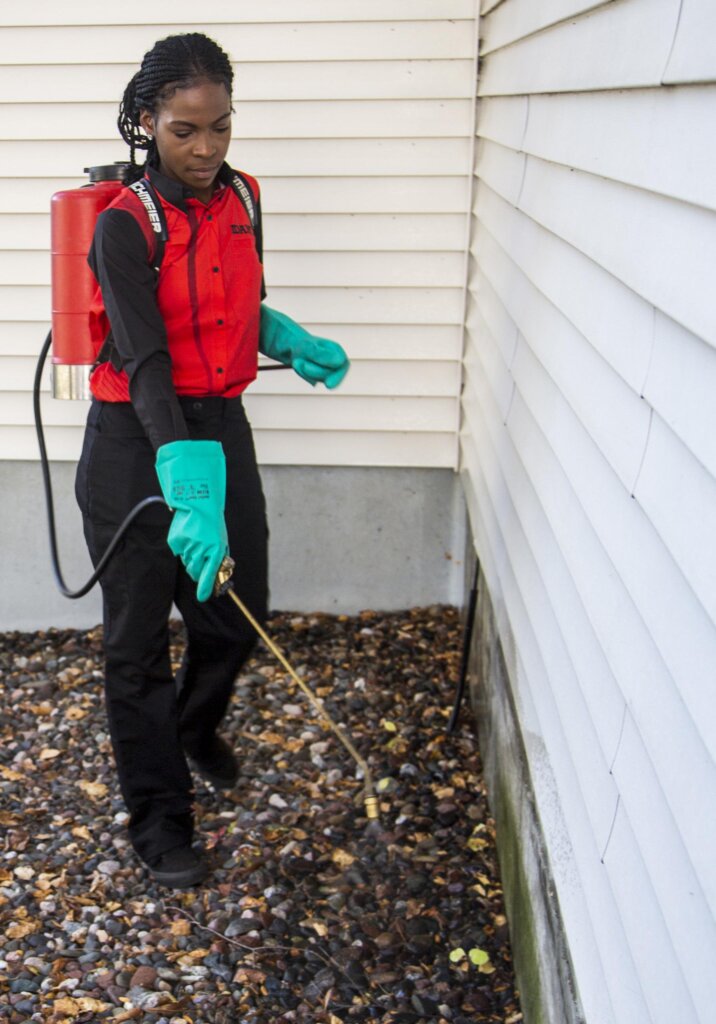Exploring Invasion and Treatment Methods in the Globe of Pest Control
The landscape of pest control encompasses a myriad of difficulties, specifically as problems of usual house parasites continue to develop. By incorporating preventative steps with sophisticated management techniques, such as Integrated Parasite Management (IPM), property owners can much better protect their atmospheres.

Typical Household Vermin
When it comes to handling our home, recognizing typical family insects is vital. These bugs not just disrupt our convenience yet can also pose wellness risks and damage property. The most common house bugs include ants, cockroaches, rodents, termites, and bed insects.
Ants, often seen foraging in cooking areas, can infect food and develop big colonies. Cockroaches, understood for their strength, can activate allergic reactions and spread virus. Rodents, including computer mice and rats, can cause structural damages and lug illness like hantavirus and salmonella. Termites, usually referred to as "quiet destroyers," can compromise the stability of wooden structures, resulting in expensive repairs. Bed pests, although not disease service providers, can cause significant pain through their bites and lead to mental distress.
Recognizing the indicators of these pests, such as droppings, nests, or bite marks, is vital for very early treatment (Pest Control Lockhart). Proper cleanliness techniques, sealing entrance points, and keeping a clutter-free environment work preventative actions. By recognizing these common home pests and understanding their habits, home owners can take aggressive actions to mitigate infestations, making sure a much healthier living setting
Recognizing Pest Infestations
Bug problems can intensify rapidly, turning a minor inconvenience right into a significant problem if not resolved promptly. Common aspects adding to infestations consist of inadequate sanitation, architectural vulnerabilities, and seasonal changes that drive bugs indoors.
Identifying the kind of parasite is crucial, as various species show varied actions and reproductive rates. As an example, rodents may establish nests in covert locations while pests like cockroaches grow in wet environments. Early discovery often pivots on recognizing signs such as droppings, munch marks, or uncommon noises, which can indicate a problem prior to it becomes extreme.
Cozy, damp climates can facilitate the fast growth of insect populations, while adjustments in landscaping or construction can accidentally produce helpful environments. An enlightened strategy to understanding these characteristics lays the groundwork for effective pest management approaches in the future.
Therapy Methods and Strategies
Efficient therapy techniques and methods are crucial for mitigating bug infestations and restoring a risk-free environment. A complex approach is commonly best, including chemical, biological, and mechanical approaches customized to the specific insect and the severity of the infestation.
Chemical therapies consist of the usage of insecticides and herbicides, which can efficiently get rid of insects. Nonetheless, correct application and adherence to safety and security standards are essential to minimize dangers to human beings and non-target organisms. Integrated Pest Administration (IPM) encourages the judicious use chemicals as a last option, relying instead on surveillance and threshold degrees to browse this site establish intervention needs.
Biological control approaches include introducing all-natural predators or parasites to minimize insect populations. This method is significantly popular, particularly in agricultural settings, as it promotes environmental sustainability.
Mechanical methods, such as catches and obstacles, offer prompt alleviation from bugs without introducing chemicals. Alternatives include sticky catches for bugs or physical barriers for rats.
Eventually, the selection of therapy technique should consider the details parasite, the environment, and potential influence on human health and wellness and communities. A well balanced combination of these strategies can successfully take care of problems while advertising long-term bug control solutions.
Safety Nets for Homes
Proactively dealing with pest problems prior to they escalate is vital for preserving a healthy and balanced home environment (Pest Control Lockhart). Executing efficient precautionary procedures can considerably lower the possibility of problems, ultimately protecting both your building and wellness

Appropriate landscape design likewise plays an important role in prevention. Keeping shrubs and trees trimmed away from your house lowers the possibilities of pests finding their means indoors. Moreover, make certain that water drainage systems are working effectively to stop standing water, which can pull in mosquitoes and other insects.
Finally, regular assessments are recommended. Regularly looking for indications of pest task enables early intervention. By taking on these safety nets, house owners can produce a setting that is much less friendly to bugs, therefore boosting their overall quality of life and minimizing the need for considerable insect control treatments.
Industrial Parasite Control Techniques
A comprehensive method to business insect control is essential for companies intending to preserve a safe and hygienic setting. Reliable methods include a combination of routine examinations, staff member training, and the implementation of Integrated Parasite Management (IPM) practices.
Normal assessments make it possible for early discovery of parasite task, enabling timely intervention. Services must develop a routine timetable for these assessments, concentrating on high-risk areas such as see cooking areas, storeroom, and waste disposal sites. Employee training is just as vital; team must be informed on the indicators of bug invasions and the importance of reporting them instantly.
Carrying out IPM methods helps minimize insect problems sustainably. This consists try here of environment modification, such as securing entrance factors and reducing clutter, along with using all-natural deterrents prior to considering chemical treatments.

In addition, teaming up with a licensed bug control service provider makes sure accessibility to expert understanding and sophisticated therapy alternatives. This partnership can cause customized insect control intends tailored to the details needs of business, reducing threats and improving overall efficacy. Eventually, an aggressive and informed technique fosters a pest-free atmosphere, safeguarding both public health and wellness and service credibility.
Verdict
To conclude, effective bug control necessitates a comprehensive understanding of common home pests and their behaviors, paired with targeted treatment techniques. Executing preventative procedures alongside therapy approaches such as Integrated Insect Management and biological control boosts the capacity to alleviate invasions. Routine evaluations and a mix of chemical and mechanical options additionally add to preserving pest-free environments. Eventually, a well-rounded approach to pest monitoring is crucial for safeguarding living rooms from unwanted intruders.